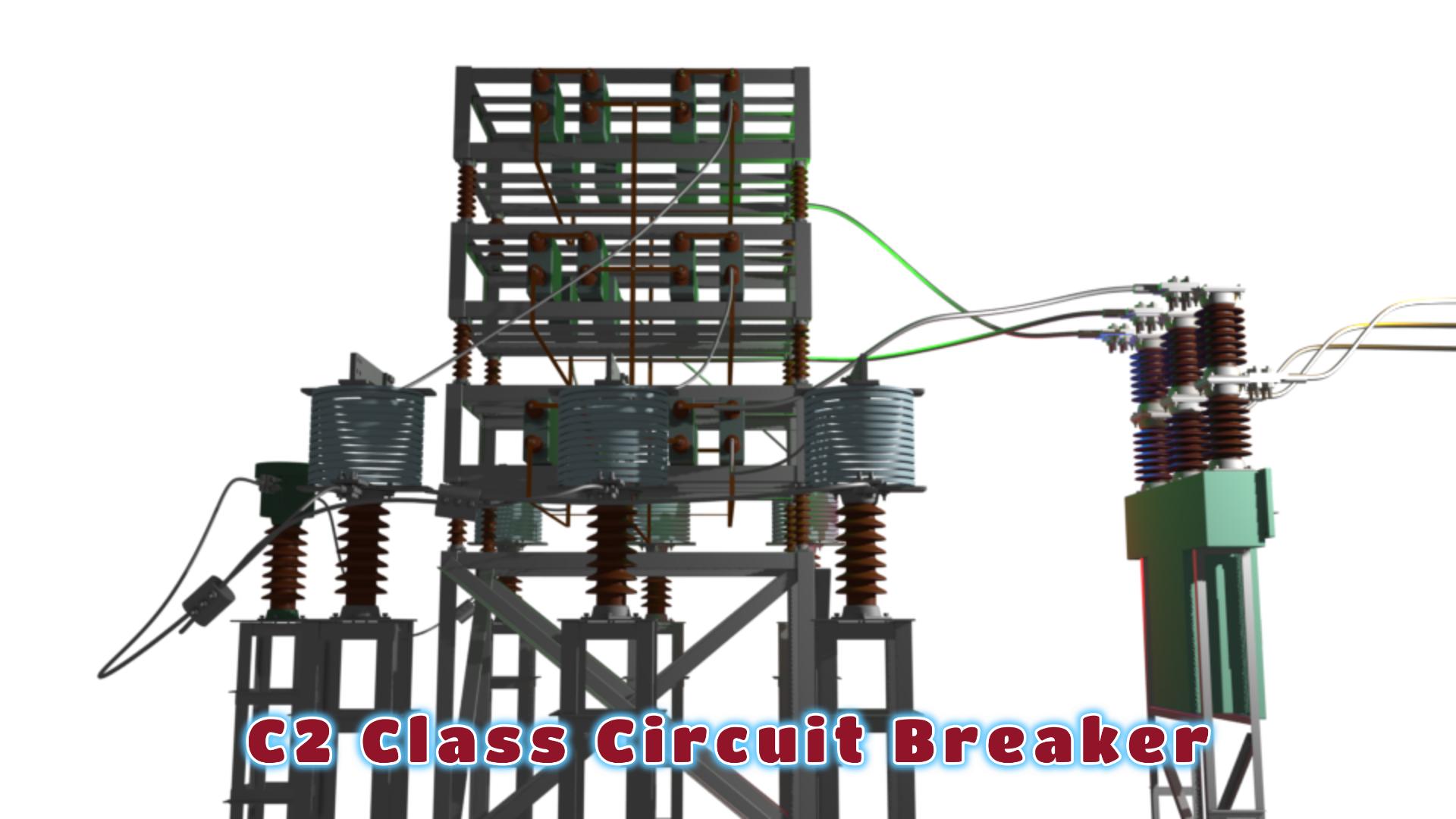The C2 Duty Cycle Test confirms a circuit breaker capable of capacitive switching operations. Even a few tens or hundreds of amperes of capacitive current may cause unexpectedly high transient recovery voltage. That is not a healthy condition for the insulation of the system. A circuit breaker interrupts capacitive current when it cuts unloaded transmission lines, cables, and capacitor banks. The test ensures the breaker can interrupt line- or cable‑charging currents, capacitor‑bank currents without restrike. The line charging or cable charging currents range few tens of amperes. The capacitor bank charging current ranges from a few tens to a few hundred amperes.
This test simulates frequent switching of unloaded lines, cables, or capacitor banks with the highest supply voltage and rated capacitive currents. Class C2 breakers must demonstrate an extremely low restrike probability during capacitive-current breaking. There are two categories of circuit breakers for capacitive current interruption purposes, and these are the C1 and C2 classes. C1 class circuit breakers are suitable for very few capacitive switchings. In practice, a C2 class CB performs efficiently, where the breaker may switch capacitive currents very often, meaning daily once or more.

C2 Duty Cycle Test Procedure and Sequence
IEC 62271‑100 defines make/break operation sequences.
Pre-conditioning – The breaker must be in normal operating condition with normal gas pressure conditions if it is SF6 CB. First, the breaker undergoes three close-open switching with 60% of the rated short-circuit current.
LC1 & LC2 – Test-duty 1 – The breaker goes for 24 Open (O) operations including 4 O in one polarity, 6 O with minimal arcing, 4 O opposite polarity, 6 O min-arcing, distributed to total 24 with 10% to 40% of rated line charging and cable charging current of circuit breaker at rated highest system voltage.
BC1 – Test-duty 1 – Then the CB goes for another 24 Open (O) operations, including 4 O in one polarity, 6 O with minimal arcing, 4 O opposite polarity, 6 O min-arcing, distributed to total 24 with 10% to 40% of rated capacitor bank charging current of circuit breaker at rated highest system voltage.
LC2 and CC2 – Test-duty 2 – After the completion of this switching cycle the CB goes for another 24 Close–Open (CO) operations including 4 CO in one polarity, 6 CO with minimal arcing, 4 CO opposite polarity, 6 CO min-arcing, distributed to total 24 with 100% of rated line charging and cable charging current of circuit breaker at rated highest system voltage.
BC2 – Test-duty 2 – Then the CB goes for another 80 Close – Open (CO) operations, including 4 O in one polarity, 32 with minimal arcing, 4 O opposite polarity, 32 min-arcing, distributed to total 80 with 100% of rated capacitor bank charging current of circuit breaker at rated highest system voltage.
For example, if the breaker is a 3-phase, 36 kV outdoor circuit breaker, the test voltage will be 36 kV. The line charging and cable charging breaking currents are 10 A and 50 A, respectively. The capacitor bank charging current is 400A.
Acceptance Criteria of C2 type CB
If no restriking occurs during the two cycles of switching, the CB confirms its class as C2. When only test cycle 1 (LC1, CC1, and BC1) is performed and no restriking occurs, the CB confirms its class as C1. On the other hand, if any re-striking occurs during any of the test cycles, the entire process from the first cycle restarts from the beginning. While no further restriking occurs, the test confirms the CB as C2 class CB. But if any restriking occurs again in the two cycles, the test fails for C2 class CB.
Lastly, if any restriking occurs during test cycle 2 (LC2, CC2, and BC2) but test cycle 1 (LC1, CC1, and BC1) passes successfully, the CB can come under C1 class.
Passing the C2 Duty Cycle Test proves the breaker can reliably switch capacitive loads under frequent operation. C2 duty-cycle tested breakers are suitable for auto-reclosing, heavy capacitor bank switching, high endurance, fast operation, no restrike, and long life.
Test Condition for C2 Duty Cycle Test
The transient recovery voltage simulates the worst-case service condition. The mechanical endurance class of the CB under test should be of M2. M2 class breaker implies more than 10,000 operations without maintenance. This is because during C2 Duty Cycle Test, the CB undergoes with number of mechanically severe switching operations, including repetitions. These may cause significant wear in the mechanism and contacts. Hence, C2 tests require CBs with a robust mechanism and contact design. M2 class confirms these requirements. The standard ambient temperature with normal humidity is the testing condition. The breaker must not go through any maintenance during tests, even after any restriking occurs in the test. No flashover occurs to ground or between poles during the test.
